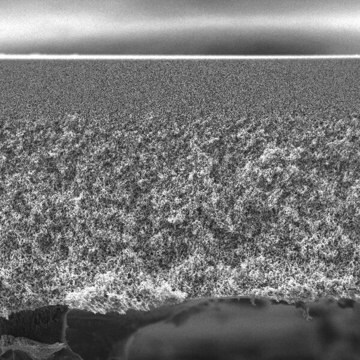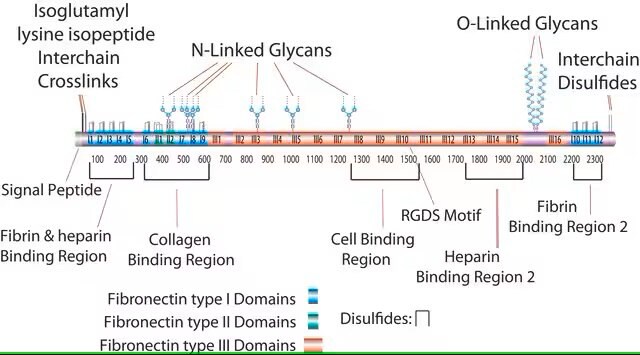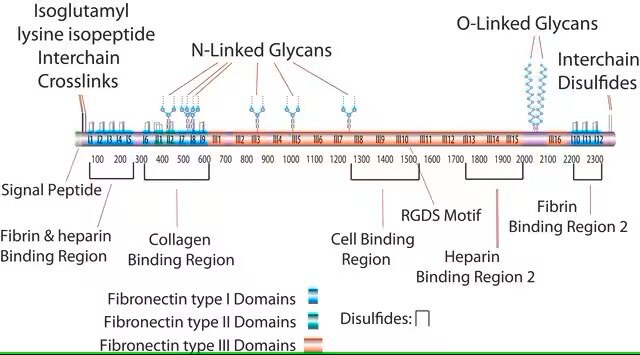F2518
Human Fibronectin
from human foreskin fibroblasts, powder, suitable for cell culture
Sinônimo(s):
Fibronectin
About This Item
Produtos recomendados
product name
Fibronectina, lyophilized powder, suitable for cell culture
fonte biológica
human foreskin fibroblasts
Nível de qualidade
linha de produto
BioReagent
forma
lyophilized powder
peso molecular
~550 kDa
embalagem
pkg of 0.5 mg
técnica(s)
cell culture | mammalian: suitable
cobertura de superfície
1‑5 μg/cm2
Impurezas
Human Source, none detected (HCV)
Human Source, none detected (HIV)
Human Source, none detected (HTLV)
Human Source, none detected (HbSAg)
Microbial Contamination, passes test
solubilidade
H2O: 1 mg/mL at 37 °C (Store reconstituted solution in working aliquots at -20°C or lower.)
nº de adesão NCBI
nº de adesão UniProt
Especificidade de ligação
Peptide Source: Collagen
Condições de expedição
dry ice
temperatura de armazenamento
−20°C
Informações sobre genes
human ... FN1(2335)
Procurando produtos similares? Visita Guia de comparação de produtos
Descrição geral
Aplicação
Ações bioquímicas/fisiológicas
Características e benefícios
- Fibronectin is isolated from human foreskin fibroblasts maintained in serum-free medium.
- It can be used as a cell attachment factor for various cell types, including epithelial, mesenchymal, neuronal, neural crest, endothelial cells, and fibroblasts.
- The starting material is tested and found negative for HIV and HBsAg.
- The product is soluble in sterile water, yielding a clear, colorless solution.
- It can be stored at -20°C for at least three years.
Atenção
forma física
Nota de preparo
Reconstituição
Nota de análise
Código de classe de armazenamento
11 - Combustible Solids
Classe de risco de água (WGK)
WGK 3
Ponto de fulgor (°F)
Not applicable
Ponto de fulgor (°C)
Not applicable
Equipamento de proteção individual
Eyeshields, Gloves, type N95 (US)
Certificados de análise (COA)
Busque Certificados de análise (COA) digitando o Número do Lote do produto. Os números de lote e remessa podem ser encontrados no rótulo de um produto após a palavra “Lot” ou “Batch”.
Já possui este produto?
Encontre a documentação dos produtos que você adquiriu recentemente na biblioteca de documentos.
Os clientes também visualizaram
Artigos
Fibronectin (FN) is a multifunctional, extracellular plasma glycoprotein produced by hepatocytes that circulates at near micromolar concentration and assembles into extracellular matrix fibrils at cell surfaces along with locally produced cellular FN.
Cancer stem cell media, spheroid plates and cancer stem cell markers to culture and characterize CSC populations.
Extracellular matrix proteins such as laminin, collagen, and fibronectin can be used as cell attachment substrates in cell culture.
Protocolos
Dilute fibronectin to the desired concentration. Optimum conditions for attachment are dependent on cell type and application. The typical coating concentration is 1 – 5 ug/cm2.Fibronectin coating protocol, products, and FAQs.
Nossa equipe de cientistas tem experiência em todas as áreas de pesquisa, incluindo Life Sciences, ciência de materiais, síntese química, cromatografia, química analítica e muitas outras.
Entre em contato com a assistência técnica









